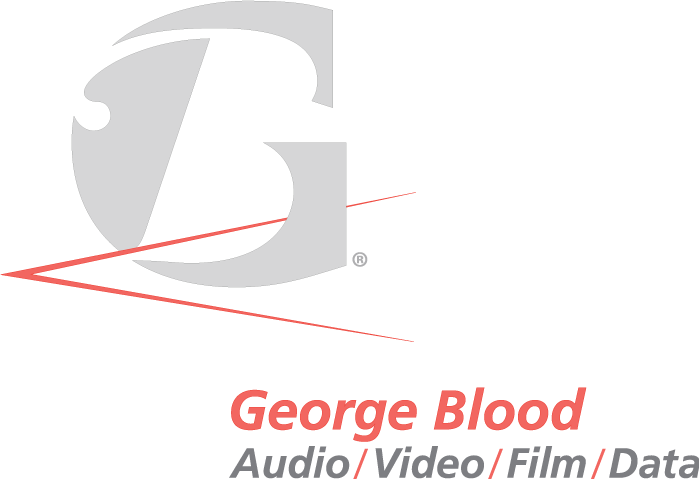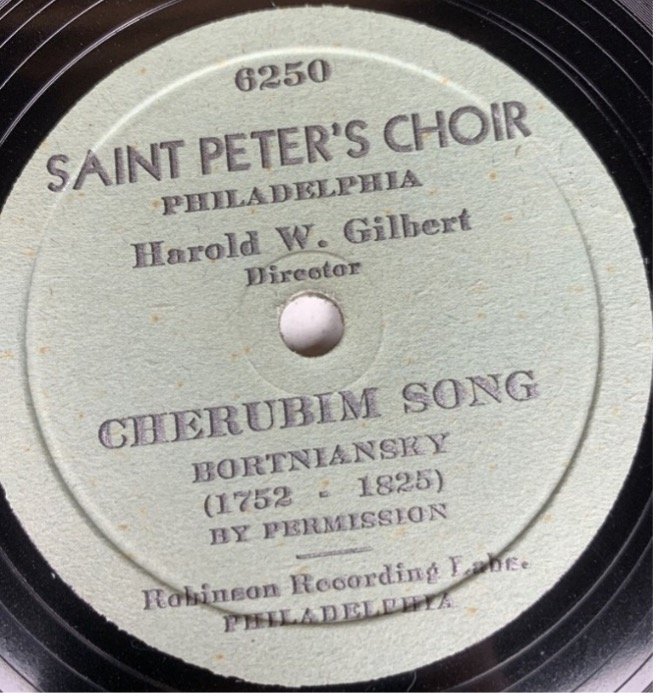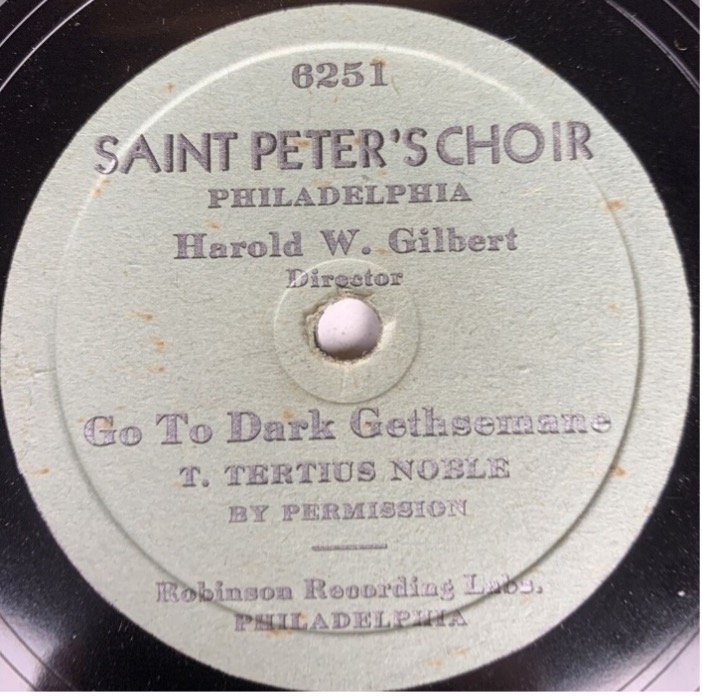Collecting and preservation go hand-in-hand. It is often the collector/researcher who applies meaning to the objects that are being safeguarded. records can be found at almost every antique store and flea market yet learning about the people who created that disc makes it significantly more interesting, and therefore more likely to be preserved.
We loving hearing the stories behind objects because we too are collectors and historians. These tales hold additional weight when coming from our backyard of Philadelphia, Pennsylvania. Below is a guest post by writer and amateur historian Fred Kelso.
This is an ephemera collector’s tale of three early Philadelphia facilities which created recorded transcriptions of musical radio programs. My research started when I acquired several dozen very intriguing records from an online dealer. Some of the discs are actually hand-dated, and through sleuthing, I was able to date others and to estimate the beginnings of the labs, so we can explore the three facilities chronologically.
WCAU Recording Studios, 1622 Chestnut Street
The first disc I’d like to discuss is a musical transcription from Philadelphia radio station WCAU. Using label data about the song, the composer, the performers and the conductor, I was able to come up with a recording date of circa 1940. In the Spring of that year, the Denver Post reported that Canon Winfred Douglas had composed “an impressive Magnificat” and created arrangements of other works which were all performed by the Mendelssohn Club of Philadelphia at their Spring season opener [DP, April 28, 1940]. The following month, the Buffalo News mentioned that Harold W. Gilbert was at that time both the choirmaster of St. Peter’s Church and the conductor of the Mendelssohn Club of Philadelphia [BN, May 25, 1940].
The label does not specifically mention a recording company, although it is quite professionally printed. It turns out that it would have been produced right at radio station WCAU, which had been founded in 1922.
“Late in 1932, WCAU moved to new facilities at 1622 Chestnut, the first building in the country constructed expressly for radio use. There were seven studios with adjoining control rooms, a master control room, transcription room, recording room and various other facilities…[including] a sound workshop for Leopold Stokowski. At least one studio was large enough to seat the entire Philadelphia Orchestra, which played live over the CBS Radio Network from WCAU.”
The recording room would have been used to create records from radio broadcasts so that they could be used multiple times. These recordings would have included advertising spots, which constituted a large portion of the station’s revenue. Indeed, the only other WCAU record that I have been able to find online is an undated spot for “Kellogg Bran Flakes.”
In 1941, Dr. Leon Levy was listed as the manager for WCAU Broadcasting Co., whose services included “recording service, production, and scripts” [Ref. 1941 Yearbook Number, Broadcasting, 1941]. Without going into detail here, it is well-attested that Dr. Levy, along with his brother Ike, and his brother-in-law Bill Paley, had mutual interests in WCAU, the CBS Radio Network, and Columbia Records, prior to 1940 [see, for instance, CBS: Reflections In A Bloodshot Eye, by Robert Metz, Playboy Press, 1975]. This latter connection makes it possible that the start-up of WCAU’s recording lab benefitted in some way from the expertise of Columbia Records personnel.
I was happy to be able to donate this disc to the folks at the Mendelssohn Chorus. Prior to this, the earliest group recording in their archives was from 1965.
Eastern Recording Company, 250 S. Broad St.
The earliest two records from my acquisition are dated March 13, 1936, and they were produced by the Eastern Recording Company of Philadelphia. They both have religious musical content for radio station WIP, including a solo by Otis W. Erisman, whose 2018 obituary in the Main Line Media News notes that he had been a student of St. Peter’s Choir School. St. Peter’s has a long and proud history, and in 1936, Harold W. Gilbert (noted above) was both the headmaster of the choir school and the choirmaster of St. Peter’s Episcopal Church (at the corner of 3rd & Pine).
“In early 1903, Ernest Felix Potter, the church organist [at St. Peter’s Episcopal Church in Philadelphia], made a proposal: Why not create a boys’ choir school? Choir schools have been part of the Anglican worship tradition for centuries… St. Peter’s Choir School for Boys opened on Sept. 15, 1903.” www.stpetershistory.org/
In 1936, the Eastern Recording Company was listed at the above address, with Herbert Schorr noted as the manager, and the services provided as “recordings” [Ref. 1936 Yearbook Number, Broadcasting, 1936]. The prior year, the Philadelphia City Directory listed Schorr as an advertising salesman. I can find no other references to Eastern, nor to Schorr’s continued involvement with recording. His career instead centered around managing, owning, and selling advertising for radio stations. He was still in Philly at the time of the 1940 US Census, as a 32-year-old salesman for a radio station. The 1950 Census shows that he and his wife Lillian had moved to Queens, where he was a “sales manager in radio broadcasting.” We know that he was serving at this time as sales manager for radio station WOV of New York, and that he left in 1952 as the part-owner of radio station WFEC in Miami, which served an African-American market [Ref. Broadcasting, July 14, 1952]. After some up-and-downs, and a variety of business deals, he eventually came back to the Philadelphia area as sales manager for WIBF-FM-TV in Jenkintown [Ref. Broadcasting, February 6, 1967].
Going back to the disc pictured above, it is quite interesting to note that 250 S. Broad St., Philadelphia was also the address of the Sam S. Shubert Theatre (built in 1918, it was renamed the Merriam Theatre in 1972, and in 2016 it was purchased by the Kimmel Center for the Performing Arts and renamed the Miller Theatre). It is currently unknown whether the theatre housed an actual recording studio that was used before or after Herbert Schorr, or whether he recorded there, or just had an office there. We do know that space was rented in in the Shubert Building from the earliest days.
Philadelphia Inquirer, October 9, 1922
Evening Public Ledger, Philadelphia, May 21, 1921
Like WCAU, WIP was started in 1922, as were WGL, the first licensed radio station in Philadelphia (an amateur effort run from the home of owner Thomas F. J. Howlett), and WFI, owned by the Strawbridge & Clothier department store. The owners of the Gimbel Brothers department store built station WIP within its walls, planning to provide local content so that customers would buy radio sets from them.
During that first year of Philadelphia radio history, WIP hosted an advertised performance by members of St. Peter’s Choir (see above).
Robinson Recording Laboratories, 204 Stepney Place, Narberth & Gimbels Brothers Dept. Store
The next examples in my collection (approximately two dozen discs) were produced by Robinson Recording Labs of Narberth & Philadelphia, and they start in January of 1937. These recordings were mostly performances by the full St. Peter’s Choir, and although radio station WIP is not mentioned, I believe it was the recipient of the recordings, and that his recording services replaced those of Herbert Schorr. 204 Stepney Place was Robinson’s house, indicating that he started out on a small scale. At the time of the 1930 US Census, he was listed as the president of a wholesale supply company, which tells me that audio engineering likely started out as a hobby for him.
For several years I have been fascinated by the website, Facebook page, and YouTube channel of the “Archive of Recorded Church Music.” For the past 20 years, UK-based Archive owner Colin Brownlee has been “preserving a unique and priceless recorded heritage from choirs of gentlemen and boys singing in the English Cathedral tradition from 1902 to the present day.” In the process, he has created the world's largest archive of relevant material, with “over 10,000 recordings from 820 choirs.” The earliest recording in the Archive is more than a hundred years old, featuring the choir of St. Andrews and released in 1902 by London’s Gramophone Company [Ref. https://www.recordedchurchmusic.org/]. Because the bulk of my new collection represents St. Peter’s (an all-male Episcopal church choir and school), this story ties in directly with the work of Mr. Brownlee’s Archive, and I was able to donate several duplicate recordings to his collection.
William P. Robinson was a Chicago-born recording engineer, who actually later designed and marketed his own recording equipment. By late 1937, he had opened a studio on the property of Gimbel’s/WIP in Philadelphia, from which he provided transcription records of radio programs.
“Robinson Recording Laboratories, Philadelphia, has opened downtown offices in the studios of WIP and has installed modern equipment valued at $12,000, according to an announcement by William P. Robinson, president of the firm. The company’s transcriptions are made by a secret electroplating process which Mr. Robinson developed after 10 years of research and development.”
Broadcasting, October 15, 1937, p. 62
In addition to radio programs, advertising spots soon became a lucrative part of Robinson’s business.
“Philadelphia, Jan. 2, -- Frank Palumbo’s, local nitery…has now scheduled a major campaign on four local [radio] stations for the new year…Announcements, all transcribed, are cut by the Robinson Recording Laboratories here, with Jack Steck reading the commercial copy…[the] advertising campaign [is] being handled by the David Lodge Advertising Agency here.”
The Billboard, Jan. 9, 1943, p. 5
Before and during WWII, Robinson was hard at work building his business. The Variety Radio Directory for 1940-41 reveals that Robinson Recording Laboratories had hired a Musical Director, Bert Balus, who is also known to have been a performer on WIP (frequently with “The Tell Sisters”). The transcriptions produced by the firm were noted as “lateral wax recordings, dramatized spot announcements, and serial commercial programs produced by noiseless process.” Among other efforts at this time, Robinson cut a record by English tenor Steuart Wilson that was sold to raise funds for British War Relief.
He also produced several commercial recordings for St. Peter’s Choir, such as the one below.
As mentioned earlier, Robinson was a technical innovator who helped to advance the state of the art in audio recording. On April 16, 1946, he was granted US Patent # 2,398,720 for a “Two-Speed Power Transmission.”
This technology was likely used in the “Recording Machine” he began to market in 1947 [Ref. Radio-Craft for September, 1947], and would have been used to make the 1946 transcription disc by Edward H. Breisacher, Jr. shown below.
I would be remiss if I failed to close by mentioning that Robinson was once responsible for recording a number one hit song. This would have been a demo record that the band then shopped around to local DJs in the hope of catching the ear of a major record label.
“The newly-christened Silhouettes had their first recording session in October 1957, when they went to the Robinson Recording Laboratories at radio station WIP (located in a Gimbels' Department Store)… [they] recorded "Get A Job" and "I Am Lonely,"… "Get A Job" took off immediately in several markets… Once the deal with the publisher was in place, Ember Records was brought in ... [and] American Bandstand start playing [the song]…soon, "Get A Job" had zoomed to the top of both the R&B and the Pop charts, becoming Ember Records' first million-seller.”











